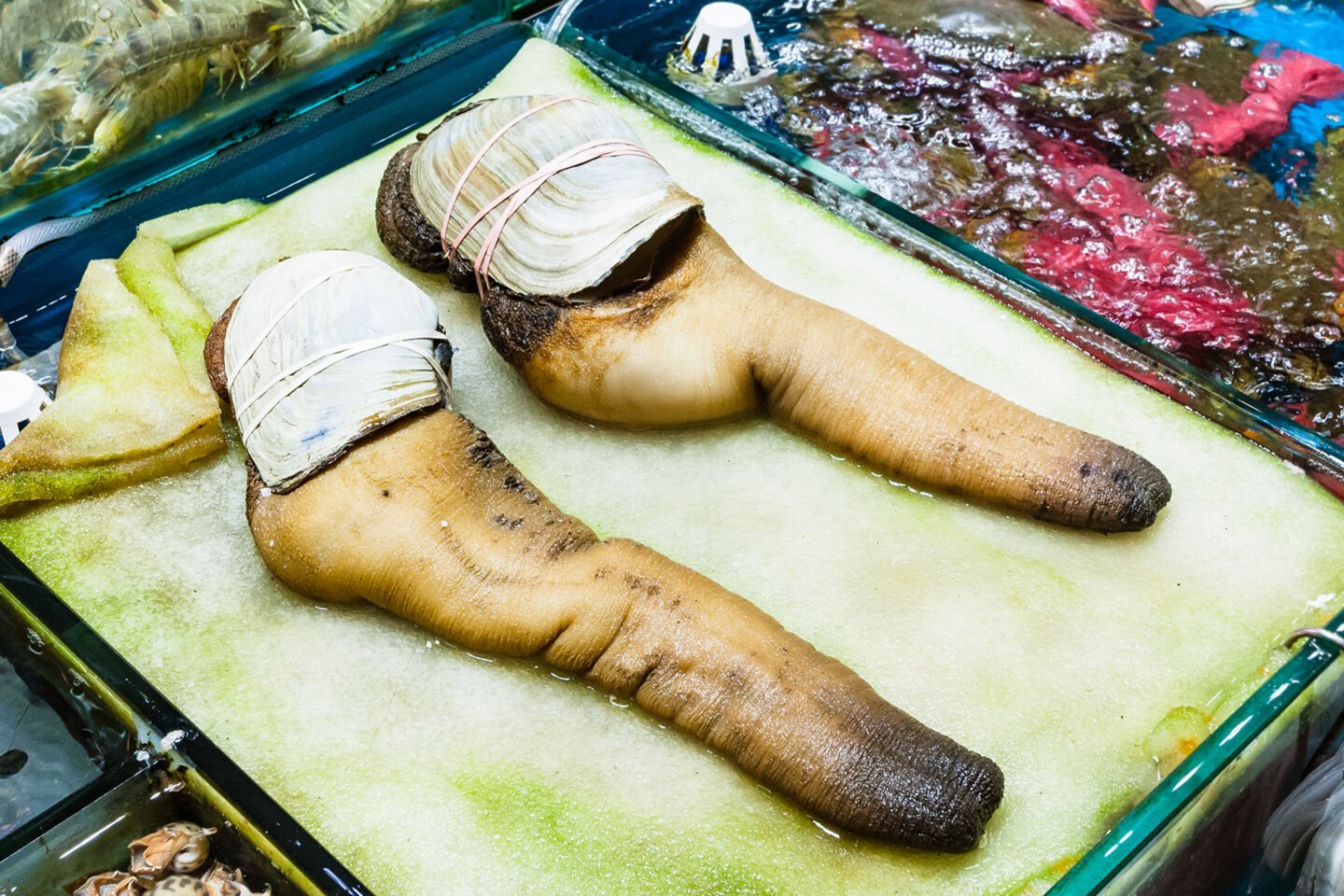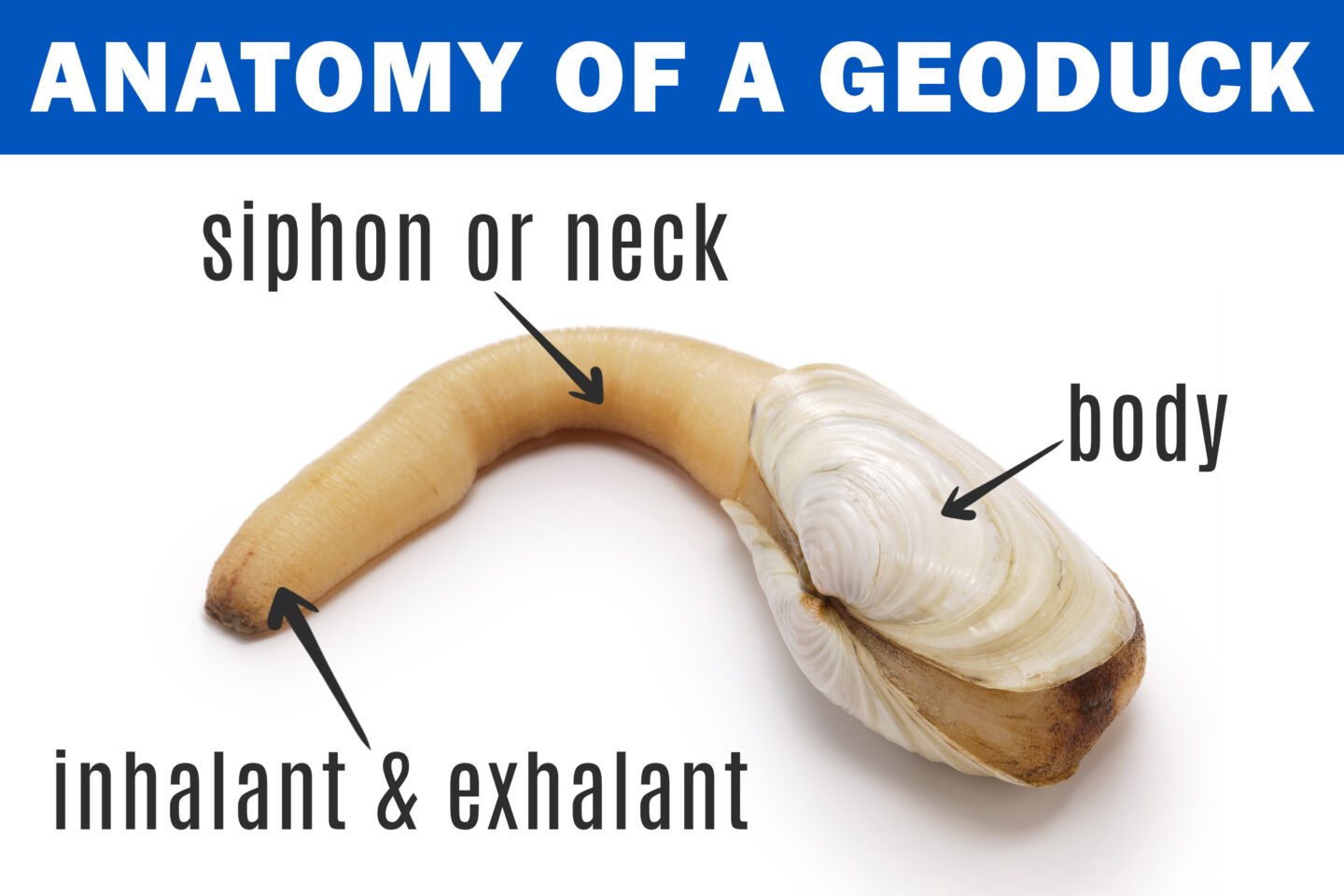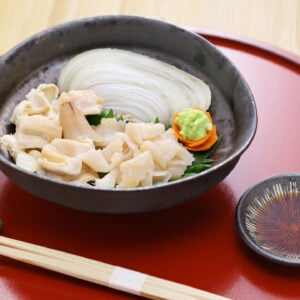The Pacific geoduck is one of those memorable ingredients that, once seen, can’t be unseen. Those that lay their eyes on it initially look in confusion, then mild disgust and finally come to a solid conclusion: “there’s no way that’s going in my mouth”. If you can look past the aesthetics of this massive saltwater clam, you’ll discover a culinary treat; a gargantuan gulp of goodness.

The mighty geoduck lives in the coastal waters of western Canada and northwest United States. It’s a type of mollusk well-known for offering delicious meat that is sweet and not overwhelmingly fishy. The flavor is best compared to a clam with a texture that offers crunch. A pleasant crunch though, not the same as you’d get from munching on sandy seafood.
A geoduck is made up of two parts: the siphon which can extend to an impressive three feet; and the body which is housed inside the shell. The siphon (or neck) sucks in seawater in search of plankton then it squirts out what it doesn’t need.

Table of Contents
How to Make Geoduck Sashimi

Geoduck Sashimi
Ingredients
- 1 geoduck
- 2 tbsp lemon juice
- splash of olive oil
- Kosher salt, to taste
Instructions
- Fill a large bowl with ice and set aside.
- Fill a large stockpot with water and bring to boil then carefully drop the geoduck into the water, then remove after 5-10 seconds.
- Place the geoduck onto the ice to stop the cooking process. Use a sharp knife to cut around the edge of the shell - this will remove the body.
- Pull out the guts and discard.
- Pull the skin off the siphon. Start pulling from the body's end and roll it off in one piece. A tea towel can help if you're having trouble gripping the skin.
- Pop the geoduck back in the pot of water for 1-2 seconds to rinse.
- Slice off the siphon. Store the body of the geoduck in an airtight container in the fridge. This meat is milder and is best steamed, pan fried or stewed.
- Butterfly the siphon by slicing it lengthwise almost all the way through then opening it up to expose the inside of the shaft.
- Rinse the insides then begin slicing the meat finely. Place the meat on a serving platter or small appetiser spoons then splash with lemon juice and olive oil. Finally sprinkle with salt.
Notes
- A good quality knife will make your job of prepping a geoduck much easier and the end result will look more presentable. Choose a Yanagiba (sashimi knife) which are available at most good homeware stores or online. A usaba or nakiri knife will also allow you to cut very fine slices of seafood.
- If you intend visiting a market to buy a geoduck, look for a good sized one. Around 7-9 ounces will be big enough. For sashimi, you'll be using the siphon; if it has a decent-sized girth, you can process nice looking slices for your dish.
- As you slice the meat, you may notice the sides start to crinkle up. This is a sign of freshness and the texture will have a characteristic crunch.
Nutrition
Here is how the experts prepare a geoduck in Japan
Summary
Many will never taste geoduck. To start with, you won't find this delicacy on most menus around the world as they're not as common as other seafood varieties like oysters or scallops. Even if you were to stumble onto a geoduck at your local market, the chances are you'd keep walking past. But don't let first appearances put you off. The geoduck is a delicious seafood that's worth its hefty price tag of around $70 each (purchased whole).
There are plenty of options for cooking geoduck but sashimi is definitely my favorite for the siphon. It's simple and allows the flavor and texture to star in the dish. If you're looking for a recipe to use the body, it goes well in a seafood pasta or steam it on its own and serve with rice and rapini.
Have you tried geoduck before? What did you think of it? Let us know in the comments below.

Leave a Reply